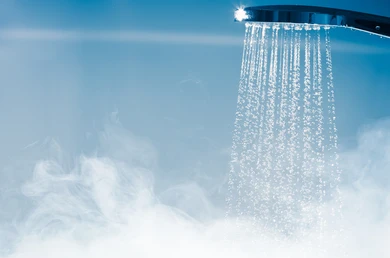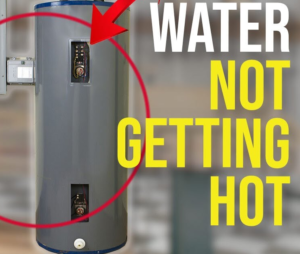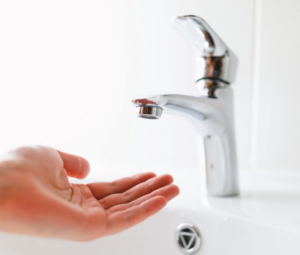There’s nothing quite as frustrating as turning on the tap only to discover there’s no hot water. Whether it’s an icy cold shower or a sink full of cold dishwater, the inconvenience of no hot water is a problem no one wants to face. Fortunately, many common causes can be identified and resolved without a professional. Here’s a detailed guide on what to do when you find yourself with no hot water.
1. Check the Water Heater
The most obvious place to start is with your water heater. There are a few reasons your water heater may not be working properly, depending on whether you have a gas or electric unit.
Gas Water Heater
If you have a gas water heater, ensure that the pilot light is on. If the pilot light has gone out, this will stop the water from being heated. Here’s how to relight the pilot light:
- Turn off the gas valve to the water heater and wait for any remaining gas to dissipate.
- Locate the pilot light assembly and the reset switch.
- Turn the gas valve to “pilot,” press down the reset button, and use a long lighter to relight the pilot light.
- Once lit, hold the reset button for a few seconds to ensure the pilot light stays on.
If the pilot light won’t stay lit or you smell gas, stop and contact a professional immediately.
Electric Water Heater
For electric water heaters, the problem could be related to the power supply. Check the circuit breaker for the water heater and ensure it hasn’t tripped. If it has, reset it. If the breaker continues to trip, or there’s no obvious issue with the electrical supply, you may have a faulty thermostat or heating element, which will require professional repair.
2. Examine the Thermostat Settings
Water heaters come with a thermostat that controls the water temperature. Over time, this thermostat can be accidentally adjusted or malfunction. The standard water heater temperature should be set between 120°F and 140°F. If it’s set too low, the water may not be getting hot enough. If the thermostat is faulty, it won’t heat the water to the proper temperature.
To check, locate the thermostat on your water heater. Adjust it to a higher setting if necessary, and wait to see if the water heats up. If not, it may be time to call a technician to replace the thermostat or assess any further issues.
3. Inspect for Leaks
A leaking water heater can cause a major drop in available hot water. Check the surrounding area of your water heater for puddles or water stains. Even a small leak can result in a lack of hot water and potential damage to your home.
If you detect a leak, turn off the power supply to the water heater and shut off the water valve. For minor leaks, it’s essential to call a professional to assess the situation and repair any damages. In more severe cases, you may need to replace the water heater entirely, especially if it’s an older unit.
4. Flush the Water Heater
Sediment buildup inside the water heater tank is a common issue that can reduce efficiency and cause hot water shortages. Minerals and debris settle at the bottom of the tank, obstructing the heating elements and decreasing the overall heating capacity of the unit.
To flush your water heater:
- Turn off the power or gas supply to the water heater.
- Attach a garden hose to the drain valve and direct the hose outside or into a drain.
- Open the drain valve and allow the tank to empty completely.
- Once drained, close the valve, remove the hose, and refill the tank by turning on the water supply.
This process will help eliminate sediment buildup and allow your water heater to work more efficiently, ensuring you have hot water when you need it.
5. Investigate the Water Supply
Sometimes the issue isn’t with your water heater but with the water supply itself. If there’s no hot water throughout your home, but the water heater seems to be functioning correctly, the problem may lie in the plumbing.
Check to see if all hot water faucets in the home are affected. If only one faucet is impacted, there may be a localized issue, such as a clog or faulty valve. However, if all faucets are affected, you may have a problem with the pipes that carry hot water from the heater to your home.
In colder climates, pipes can freeze during winter, cutting off the hot water supply. If you suspect frozen pipes, locate the affected section and gradually thaw it using a hairdryer or heat lamp. Never use an open flame to thaw pipes as it can damage the pipes or cause a fire.
6. Inspect the Water Heater Capacity
If you’ve recently noticed a lack of hot water, consider whether your household’s water usage has increased. The water heater may not be able to keep up with the demand if multiple appliances or showers are in use simultaneously. A water heater that’s too small for your home can result in hot water running out quickly.
For larger households, consider upgrading to a water heater with a larger tank or a tankless water heater, which provides hot water on demand.
7. When to Call a Professional
While some hot water issues can be fixed with basic troubleshooting, others may require the expertise of a professional. If you’ve tried the above solutions and still have no hot water, or if you’re uncomfortable performing the steps yourself, it’s best to call a trusted HVAC and plumbing specialist.
A professional technician can accurately diagnose the problem, whether it’s a malfunctioning heating element, a leaking tank, or an issue with the gas or electrical connections. Additionally, if your water heater is old or requires frequent repairs, replacing the unit entirely may be the most cost-effective long-term solution.
Preventing Future Hot Water Issues
To avoid being left without hot water in the future, consider these preventative measures:
- Regular Maintenance: Schedule annual inspections for your water heater to ensure it’s running efficiently. Regularly flushing the tank and checking the thermostat can prevent many common problems.
- Water Heater Lifespan: Most water heaters last 10 to 15 years. If yours is nearing the end of its lifespan, it may be time to consider a replacement before issues arise.
- Insulate Pipes: In colder climates, insulating your pipes can prevent freezing and subsequent hot water shortages. Pipe insulation is inexpensive and can save you from significant repair costs.
FAQ
- Why is there no hot water in my home?
Common reasons for no hot water include a malfunctioning water heater, tripped circuit breaker, faulty thermostat, or problems with the gas supply (for gas water heaters). - What should I check first if I have no hot water?
Start by checking the circuit breaker to ensure the water heater has power. Then, inspect the water heater’s thermostat settings, pilot light (for gas heaters), or heating element (for electric heaters). - How do I reset my water heater?
Locate the reset button on your water heater, typically near the thermostat. Press and hold it for a few seconds. If the heater doesn’t reset, the problem may be more serious, and professional help is recommended. - Why does my water heater pilot light keep going out?
A faulty thermocouple, a dirty pilot light opening, or a problem with the gas supply could be causing the pilot light to go out repeatedly. - How can I tell if my water heater is broken?
Signs of a broken water heater include strange noises, water leaks, rust-colored water, or no hot water even after resetting the unit. If you notice any of these, it’s time to contact a professional. - What can cause a sudden drop in hot water temperature?
A sudden drop could be due to sediment buildup in the tank, a malfunctioning thermostat, or a damaged heating element. - Should I call a professional if I have no hot water?
If you’ve checked the basics (power, thermostat, pilot light) and still have no hot water, it’s advisable to call a licensed technician to diagnose and repair the issue safely. - How often should I maintain my water heater to avoid hot water issues?
Regular maintenance, such as flushing the tank to remove sediment, checking the anode rod, and testing the thermostat, should be done annually to prevent problems with your hot water system. - What are the benefits of upgrading to a tankless water heater?
A tankless water heater provides continuous hot water, increased energy efficiency, and takes up less space compared to traditional tank water heaters.





